Surviving on the Underground Railroad to Colombia
Thousands flee daily along the main corridor of immigration from Venezuela to Bogota and points beyond, and an informal economy has evolved to help them.


Photos: Joshua Collins
We wake up on the streets of La Laguna after a frigid night. Our group has been walking and hitchhiking from the Venezuelan border for six days. Moisés, 18, is hungry and wants to buy some food for the long road ahead.
“I have 500 pesos (about 20 cents USD),” he says and looks at the rest of the group. They return blank stares.
Moisés pulls a bag of plastic jewelry from his backpack and passes them out to the group.“It’s okay,” he says. “We can sell these necklaces.”
Everyone disperses into the streets offering their cheap accessories to passersby, in an attempt to earn breakfast.
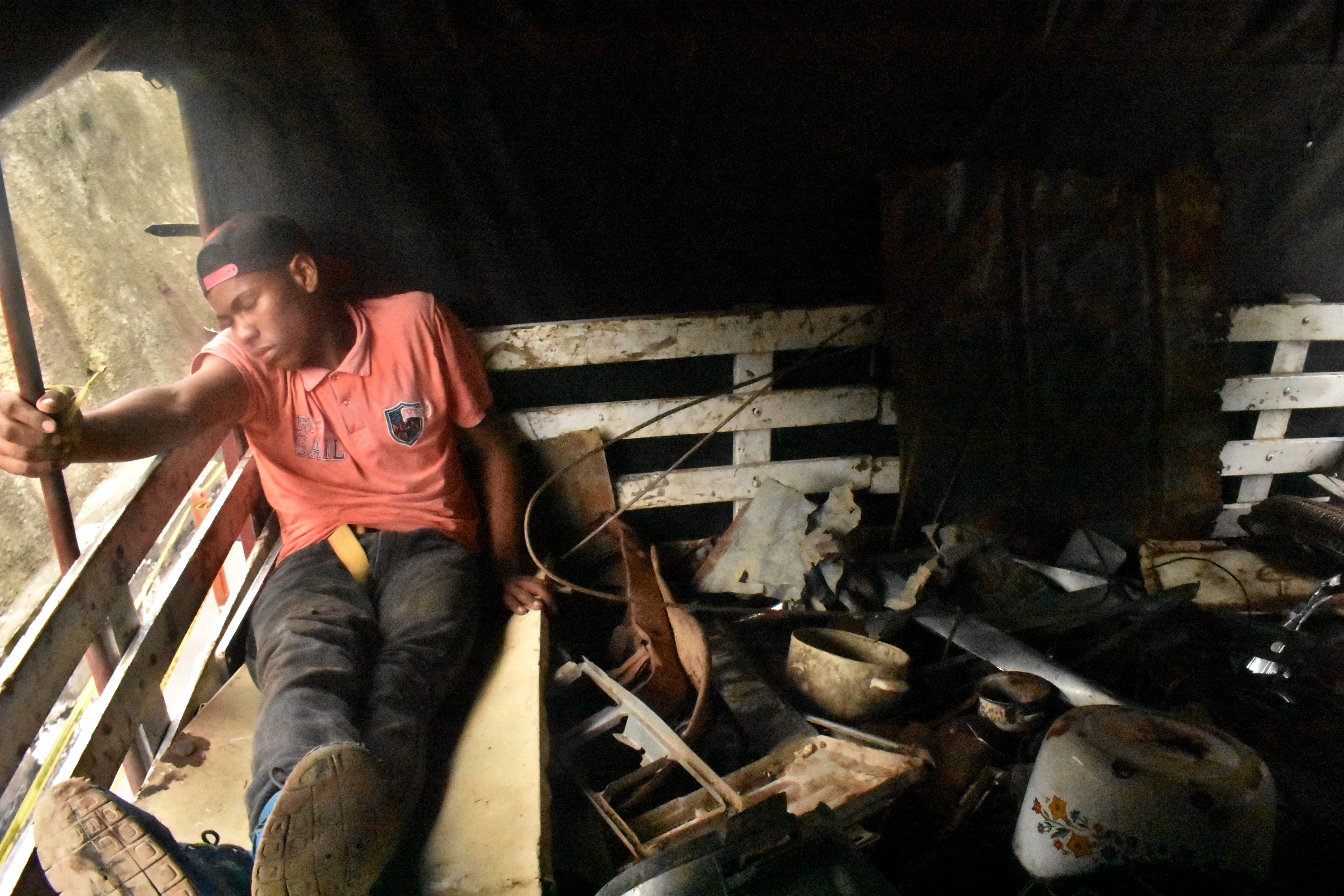 A Venezuelan hitchhiker takes a respite during the long ride in a truck transporting scrap metal. (May 20th 2019)
A Venezuelan hitchhiker takes a respite during the long ride in a truck transporting scrap metal. (May 20th 2019)
I joined them at the border and walked 672 kilometers, climbing 3,500 meters over eight days, on our way to Bogota. These young Venezuelans, most with little more than backpacks and blankets, are a few of the thousands fleeing daily from a crumbling country. It’s the biggest mass-migration in South American history, with 3.7 million people fleeing since 2015.
Welcome and carry on
An underground economy has evolved along the main immigration route to Bogota and beyond, with an informal network of shelters and kitchens appearing to provide for the thousands entering Colombia on foot daily: maps, vaccines, food, water, basic medical attention and shelter are now available.
Located on the outskirts of Cucuta, ADRA is the first shelter we pass. Millions of bolivars, Venezuela’s nearly worthless currency, are fixed to the rough wooden entrance. They flap in the wind as we approach, their papery sound carrying across the hot and dusty plains. Each bill is covered with notes of thanks, or advice to fellow travelers.
“Colombia has a strange policy when it comes to Venezuelan immigration,” says Miguel, a worker at the shelter who seems to be about 30. “They say ‘Welcome! Come in!’ but they provide very little direct support.”
The Colombian government has focused on assimilating Venezuelans rather than building permanent refugee camps or providing direct aid. Instead, efforts are being made to reinforce the education and medical programs that are strained by the 1.2 million Venezuelans estimated to live here.
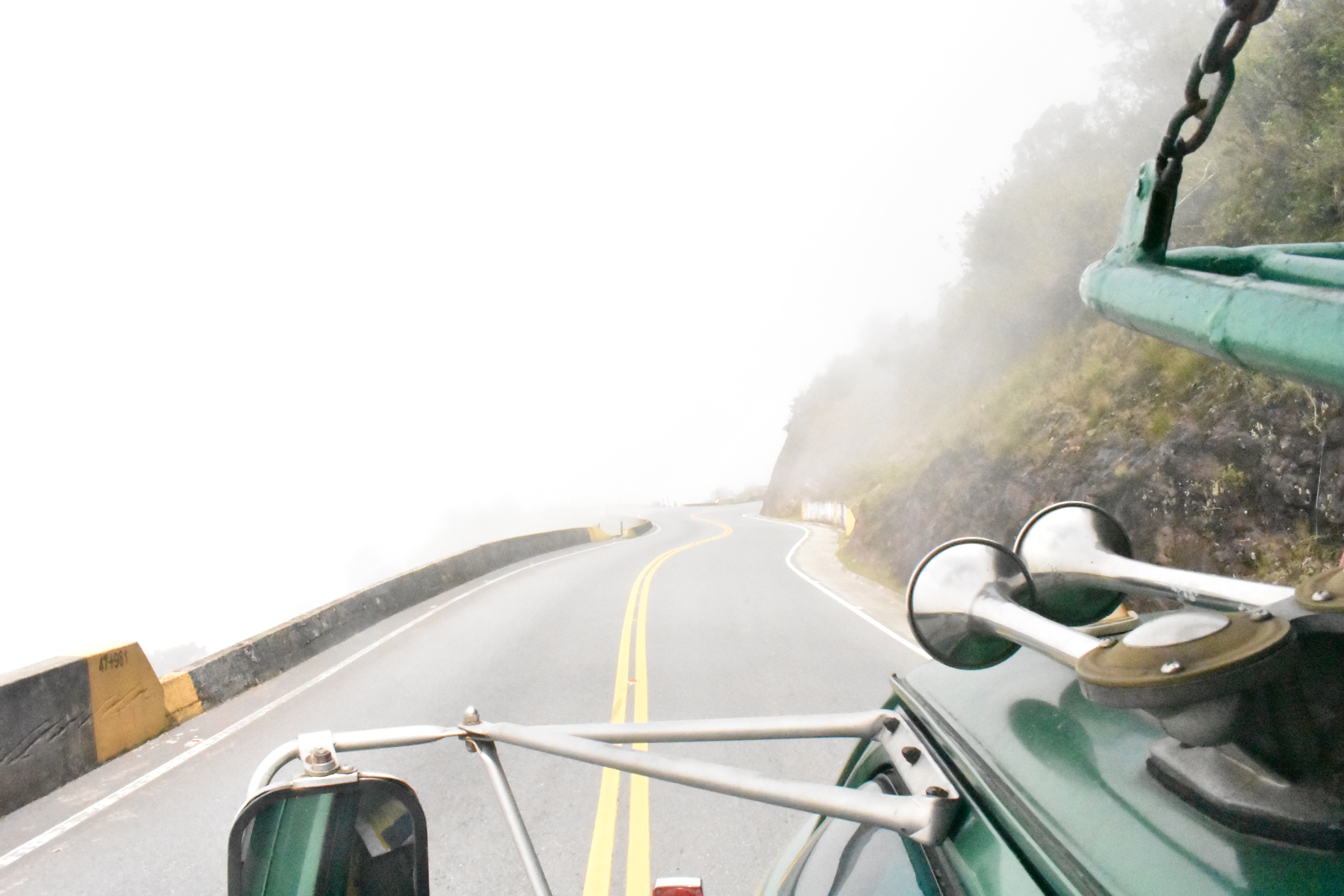 Paramo Berlin, Colombia- The group hitched a ride through the coldest and most dangerous section of the journey. Temperatures approach zero in Paramore Berlin. May 15th 2019.
Paramo Berlin, Colombia- The group hitched a ride through the coldest and most dangerous section of the journey. Temperatures approach zero in Paramore Berlin. May 15th 2019.
Most of the shelters on the route are run by international organizations, who receive support from their regions of origin: ADRA is based in Puerto Rico; Samaritans Purse, from the United States, works with the Colombian Red Cross and receives support from a wide coalition of religious organizations; World Central Kitchen, founded by famous Spanish chef José Andrés, is a relative newcomer, subsidizing kitchens in the network with fresh-cooked meals for the last three months now.
“We feed and shelter between 300-600 people here daily,” says a worker at the Samaritans Purse refuge. ¨The Red Cross provides basic medical care. We feed those passing and give them food and water.”
“The biggest difference I see from when we opened in November is that I see more children, more women, more babies and more elderly on the road. I even see people in wheelchairs.”
A Red Cross nurse tells me she advises mothers with newborns not to make the trek through Páramo de Berlín, the coldest and most dangerous part of the journey:
“They don’t realize how dangerous it is. I see women taking newborns on foot. I always advise them not to, but they don’t listen.”
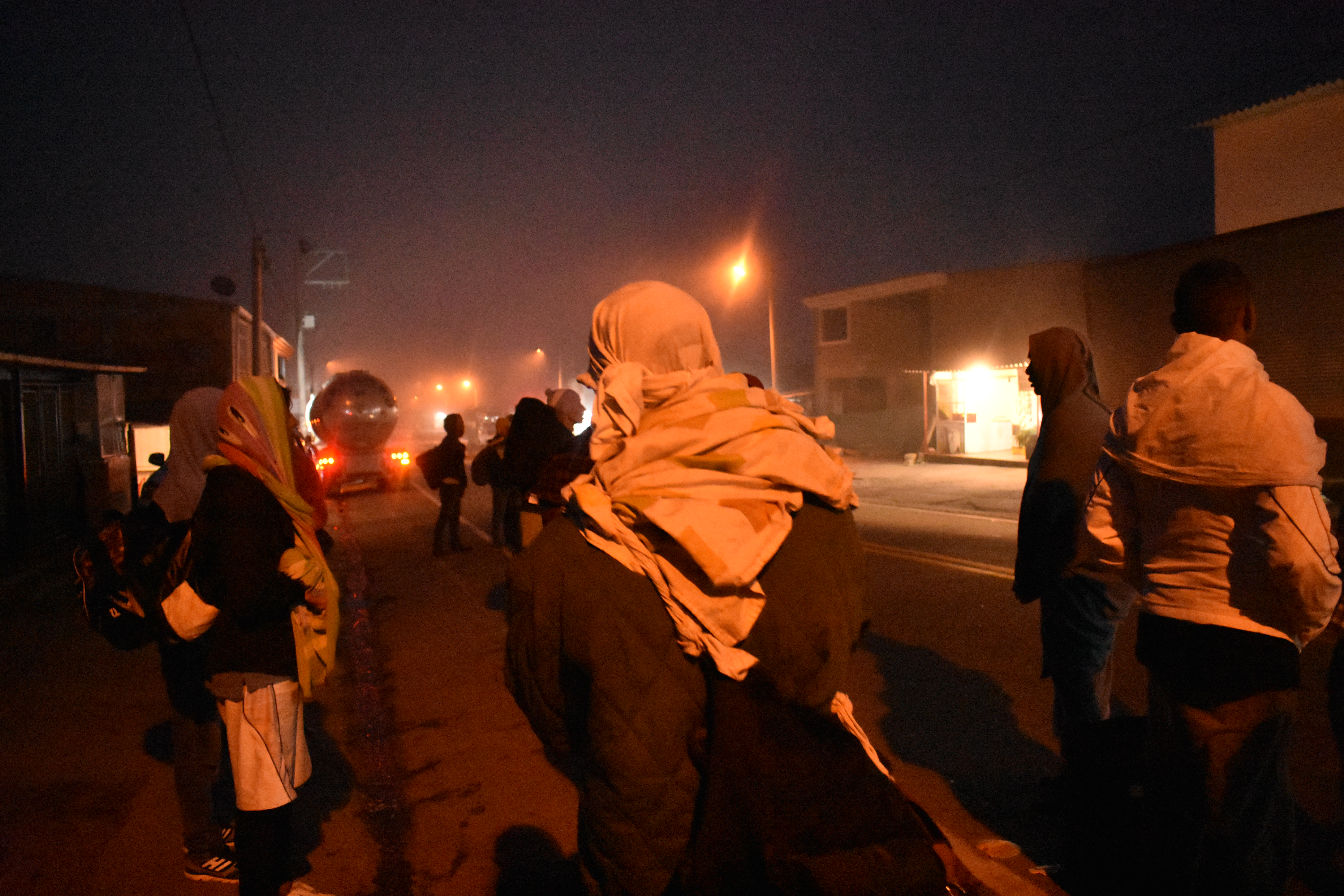 La Laguna, Colombia- Ivan, 19 talks with other migrants as night falls. He hopes to find enough people willing to contribute to a cheap hotel room for the night. He is unhappy about sleeping on the streets. The effort is unsuccessful. May 14th 2019.
La Laguna, Colombia- Ivan, 19 talks with other migrants as night falls. He hopes to find enough people willing to contribute to a cheap hotel room for the night. He is unhappy about sleeping on the streets. The effort is unsuccessful. May 14th 2019.
t the end of two tiresome days, we reach the edge of Pamplona. We’ve covered 75 kilometers entirely on foot, and climbed 2,342m in elevation. We left behind the blistering heat of Cucuta, the air is crisp and slightly cold. We’re exhausted.
Hundreds of refugees mill around Martha Duque’s Home for Migrants, waiting for dinner, and I end up chatting with Alejandro, 19, from Valencia. When the shelter offers me a plate, I politely refuse, not wanting to take food from someone who might need it more. Alejandro is confused by this. I tell him I’ll get something nearby.
“You mean, you can eat whenever you want?” he asks, with childlike wonder.
I have no idea what to say to that.
In 2017, Martha converted her house into a private shelter and kitchen for passing migrants. She’s eternally smiling, giving hugs to everyone in the room and offering advice to the dozens of young mothers in her care.
“One night I saw a mother sleeping with a child under a truck near my house,” she tells me. “I couldn’t stand to see that, so I invited them in. As long as there are Venezuelans in need, my doors will be open.”
She says that all resources come from private donations in the Pamplona area. When asked what she needs most, her answer is simple.
“Food.”
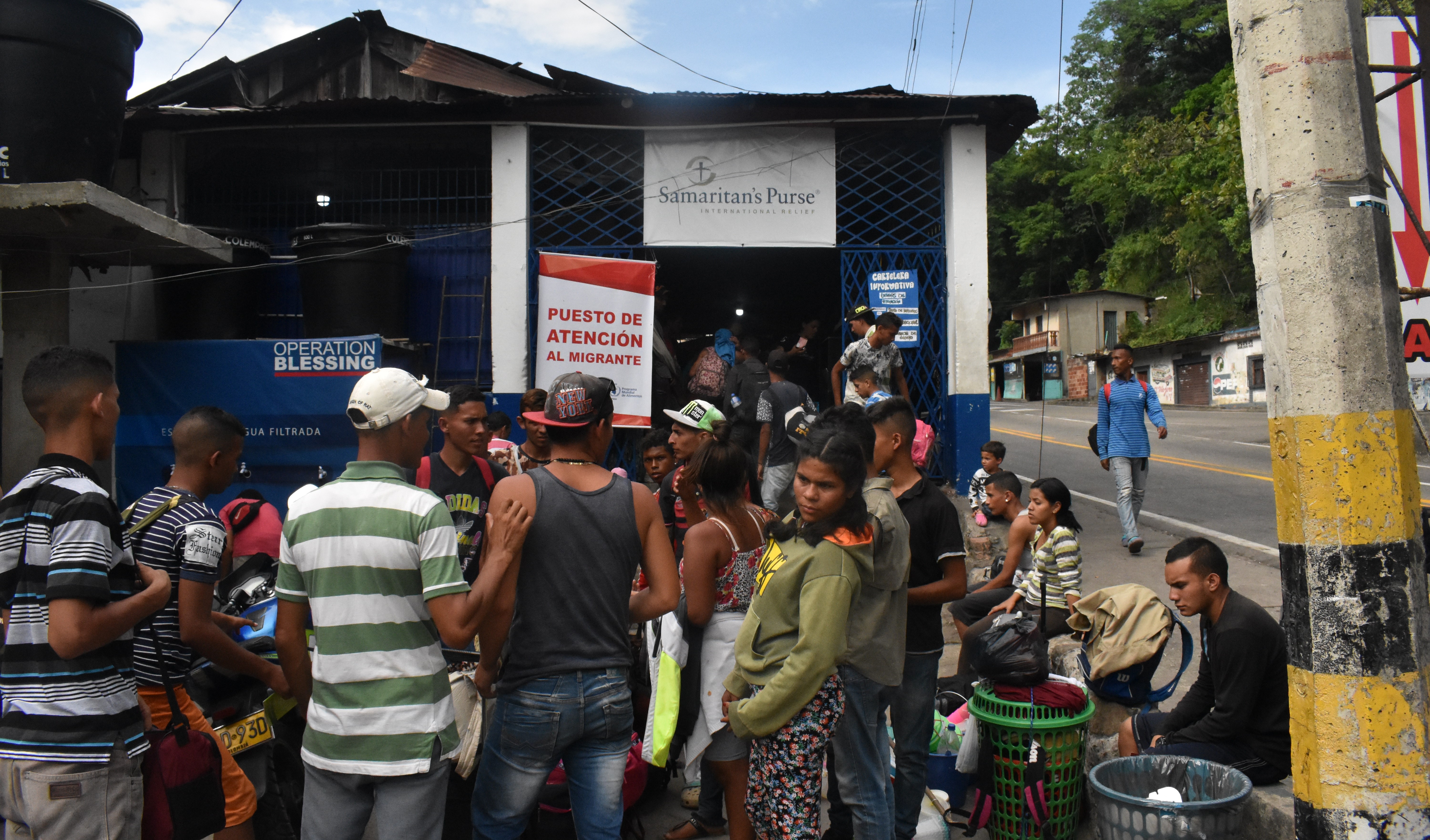 Near Pamplona Colombia- A shelter run by Samaritan’s Purse and the Colombian Red Cross offer food, shelter and basic medical attention to between 300 and 600 Venezuelans daily. May 12th 2019.
Near Pamplona Colombia- A shelter run by Samaritan’s Purse and the Colombian Red Cross offer food, shelter and basic medical attention to between 300 and 600 Venezuelans daily. May 12th 2019.
The market of the road
Some Venezuelans work in Pamplona as domestic servants, or in restaurants, although most continue on. Each town on the route is similar, streets full of refugees selling cheap candy, coffee, or single cigarettes from packs they carry in outstretched arms.
“¡A la orden!” (which means “at your service”) is a common refrain.
The Red Cross station in La Laguna has run out of warm clothes when we finally arrive, so we continue towards Páramo de Berlín, where humidity is 99% and temperatures drop below freezing.
“Look! Look!” says José, a few hours into the hike. “A ride!”
A truck has stopped ahead of us. We sprint towards it, some of the kids even climb the wooden slats to get on board.
“Hey, hey! 50,000 pesos! It’s not free! For 50,000 I’ll take you to the next shelter.”
We don’t have that type of resources (about 17$ USD) and there are many such encounters as the road ahead. If a driver is caught illegally transporting passengers, he faces a fine and can lose his license for three months, yet that doesn’t stop a lot of them from trying to earn a little extra money from the desperate.
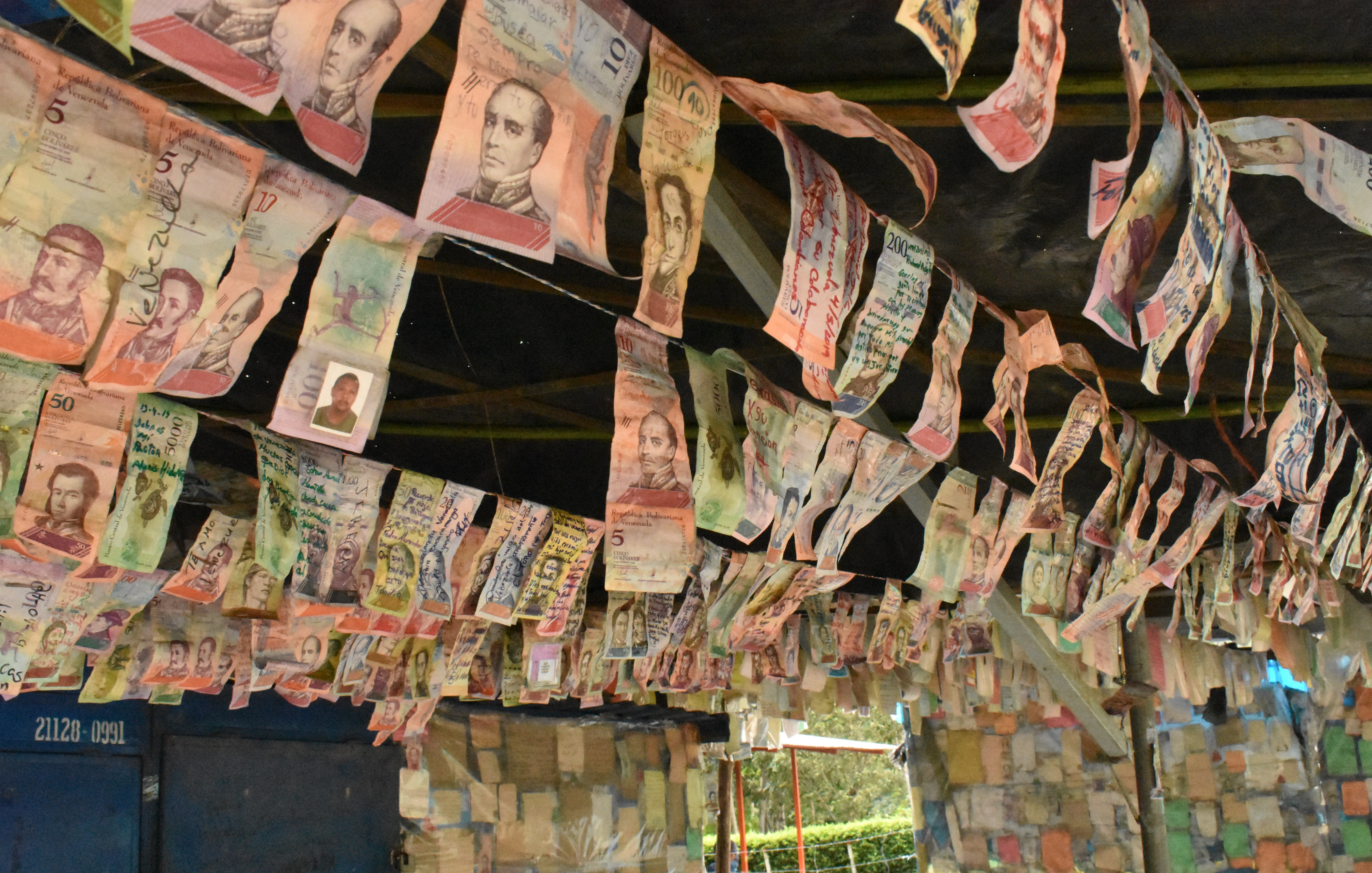 Outskirts of Cúcuta, Colombia- The entrance to the ADRA shelter is decorated with notes of advice to fellow travellers and messages of gratitude written on Bolivares. May 12th 2019.
Outskirts of Cúcuta, Colombia- The entrance to the ADRA shelter is decorated with notes of advice to fellow travellers and messages of gratitude written on Bolivares. May 12th 2019.
The route is also dotted with small stands selling cheap food items to the passing immigrants. Many of these illegally hire Venezuelans at cutthroat rates that most Venezuelan employees are grateful for anyway. It’s impossible to get numbers on the scale of such an informal economy. No one is paying taxes, so there are no records.
The World Bank estimates that Colombia spends between 6 to 12 billion dollars (0.2% and 0.4% of the GDP) supporting this wave of immigration. That number is expected to rise as the quantity of refugees increases.
Bogota
We arrive in Bogota after eight days. Our group is easily identified as Venezuelan by the government-issued tricolor backpacks the boys wear. Walking into the edge of the city, a truck zooms past: “You idiots need to get rid of Maduro! We don’t need more Venezuelans here!”
“In Venezuela, the tricolor doesn’t mean you support Maduro,” explains José, 18. “It just means you’re poor.”
He seems hurt by the display of xenophobia. “I didn’t leave my family, my country and my girlfriend behind because I wanted to. I did it because I had no choice.”
Bogota is overwhelmed. There are Venezuelans begging on almost every corner. Many sleep on the streets in the notoriously dangerous neighborhoods in the south, and it’s hard to even find illegal jobs. The immigrant camps have closed, the city government citing violence and complaints from local neighbors for the decision. The cost of operating them was no doubt a bigger and more unofficial reason.
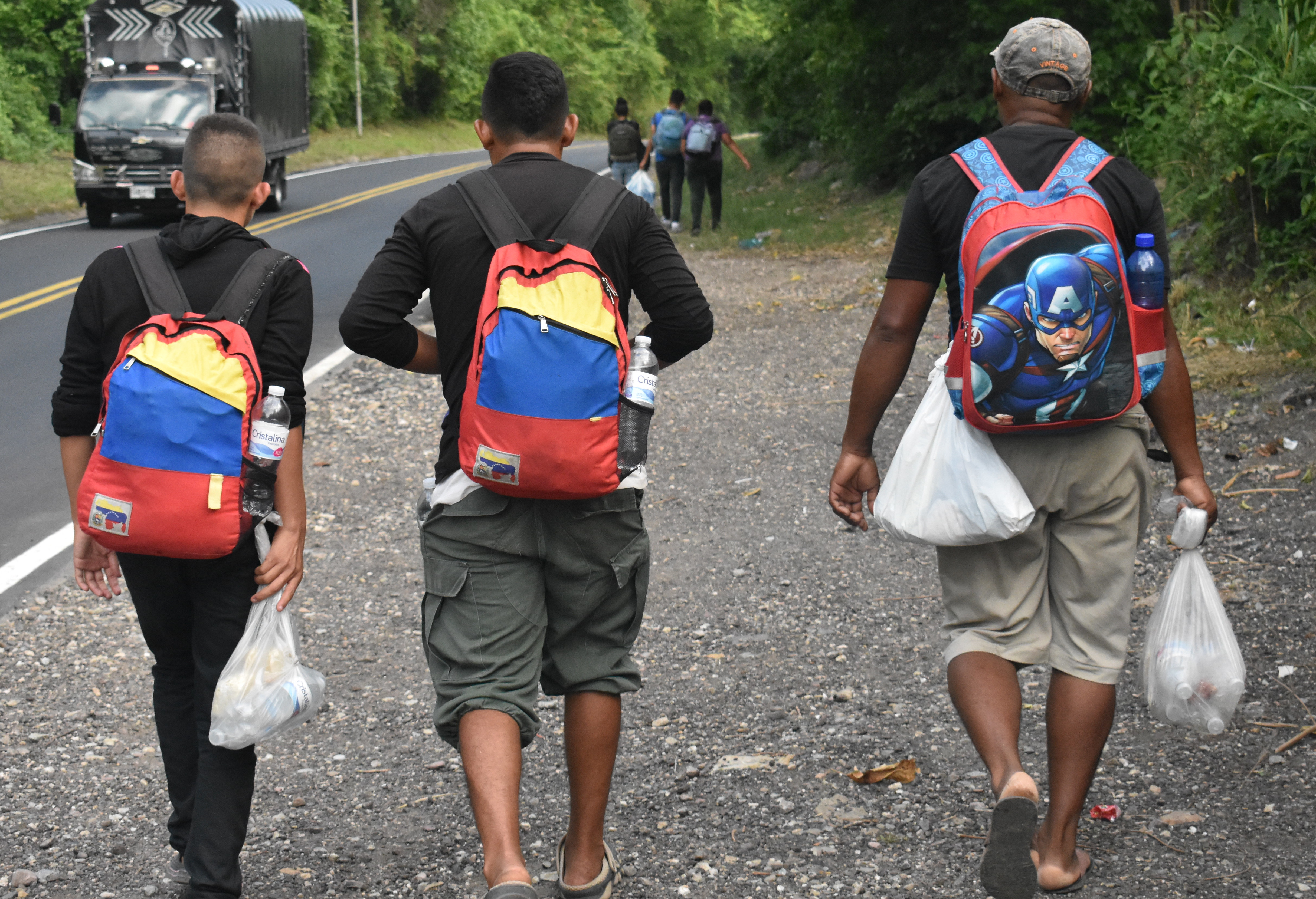 Near Pamplona Colombia- Our group leaving the Good Samaritan’s shelter. Two Venezuelan tricolors and a Captain America backpack often attract conversations from the Colombians they pass on the journey. May 12th 2019.
Near Pamplona Colombia- Our group leaving the Good Samaritan’s shelter. Two Venezuelan tricolors and a Captain America backpack often attract conversations from the Colombians they pass on the journey. May 12th 2019.
“These young kids from Venezuela have never known anything other than communism,” says Miguel, 30, a Colombian photographer in Bogota. “They’ve never had to work in their lives, and they don’t want to. They just expect us to give them everything.”
But after eight grueling days on the road with these kids, lazy is the last thing I would call them. Their resilience and bravery are palpable.
Our group separated with hugs and farewells. A few stayed in the capital, but most continue to other Colombian cities, to Ecuador, and to Peru. Some of them face another month on foot.
Bogota is where the global Venezuelan diaspora begins.
Caracas Chronicles is 100% reader-supported.
We’ve been able to hang on for 22 years in one of the craziest media landscapes in the world. We’ve seen different media outlets in Venezuela (and abroad) closing shop, something we’re looking to avoid at all costs. Your collaboration goes a long way in helping us weather the storm.
Donate




